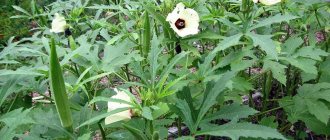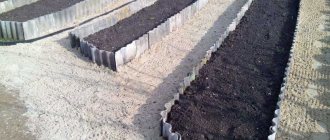Varieties
Before setting up beds for cucumbers, it is recommended that you familiarize yourself with their main varieties. This will help in the future to choose the most suitable beds for cucumbers.
Trench
Quite often, before planting cucumbers in open ground, trench-type beds are created. In this case, the place for planting cucumbers is located in a pre-dug trench, into which all the necessary nutritional components are placed. The trench is created for better decomposition of the fertilizer and for warming the soil. Before planting cucumbers, all fertilizers in the trench are covered with soil almost to the very top.
High
Some gardeners grow cucumbers in a high bed. To create such a bed for cucumbers with your own hands, you need to create a special wooden frame. Mineral fertilizers with fresh bird droppings are placed in it. All fertilizers are covered on top with a thick layer of soil, which should be slightly raised above the ground. Experienced vegetable growers say that it is better to plant cucumbers in such structures, since they are reliably protected from weeds.
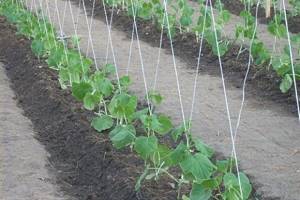
Combined
You can also grow cucumbers in combined beds. This growing method consists of the main components of the above types. A combined cucumber bed consists of a small underground trench and a frame installed on top, which is made from durable wood.
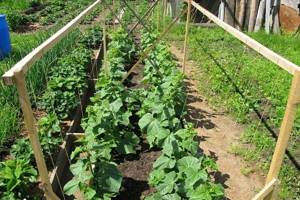
Proper beds for cucumbers are the key to high productivity
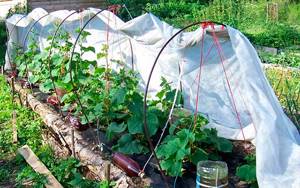
Horizontal rows can be seen in any garden, and with the right approach, you can achieve abundant harvests this way. The main secret is the manure layer under the ground, which warms the ground and nourishes the plants with useful substances.
A smart garden bed is prepared in advance; it is better to start preparing the place in the fall. A hole is dug under the bed; the width of the bed should not exceed 1.5 m, the length is limited by the area of your plot. Dry branches, manure, drainage layer, and compost are laid out in layers in the prepared pit.
If you are planning a high bed, then its edges must be reinforced with slate sheets or lined with bricks. Over the winter, the earth will be saturated with useful elements.
In spring, the soil must be treated with boiling water to eliminate all bacteria that were not killed by frost and to activate the production of heat by manure and compost. You can plant both seeds and seedlings grown in a greenhouse on a ready-made smart bed.
Many gardeners take photos of their achievements, inviting other people to benefit from their experience and get good yields from small gardens. Using some tricks when growing cucumbers will help you not only be proud of your garden, but also save time on caring for your plants.
So share your achievements in the comments, repost the article on social networks for your friends - let them have good harvests and proper beds. And don't forget to subscribe to the blog so you don't miss the necessary information.
Where to plant cucumbers
After familiarizing yourself with the main beds, you should determine a place to plant cucumbers in the spring. First you need to figure out what exactly cucumbers like - sun or shade. Cucumbers are light-loving vegetables. The area for growing them should be well lit throughout the day and therefore the beds should not be located under trees.
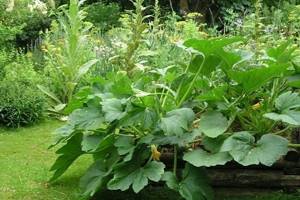
The choice of garden plot for spring planting cucumbers in the ground directly depends on the region in which the vegetables will be grown. For example, in the southern parts of the country, you may not have to worry about planting vegetables in sun or shade. They will grow even better in shaded areas, since in summer some bushes may dry out due to the sun's rays. In more northern regions, the cucumber bed should be located on southern slopes, which are well illuminated by the sun's rays.
Also, when choosing a place in the garden, you need to consider what soil is most suitable for cucumbers in open ground.
Loamy and sandy loam soils are considered the most suitable for growing this vegetable. At the same time, the acidity of the soil should not be too high. If you plant cucumbers in soil that is too acidic, the seedlings will develop very slowly. To make sure that the soil is not very acidic, you should use litmus paper. During the test, soil from the garden is mixed with a liter of boiled water, after which litmus paper is applied to the mixture. The most optimal soil acidity is 7-8 Ph.
See also
Growing and description of the Chinese snake cucumber varietyRead
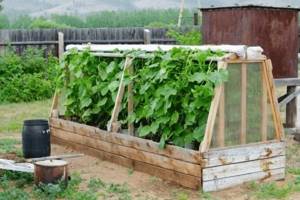
Preparing a bed for cucumbers
Every gardener, planning to sow a particular vegetable, begins by determining a place for it. Cucumbers love the sun, it is advisable to protect them from the wind and not plant them in places where the ground dries out for a long time after rains. The ideal option is on a hillock, on the south side of a blind fence or building. If the bed is planned to be located in an open area, the rows are directed from north to south, then the plants will be evenly illuminated throughout the day.
You should not grow cucumbers in one place every year; you need to take into account the principles of crop rotation:
- good predecessors are cabbage and tomatoes;
- can be planted after potatoes, root vegetables, legumes, greens;
- you can’t - after zucchini, pumpkin, squash.
Having decided on the location, mark the boundaries of the bed. The planting pattern or density indicated on the bag of cucumber seeds will help with this.

On a bag of cucumber seeds, the manufacturer often indicates the required planting density
For example, if the planting density is 4–5 plants per 1 m², and you only need 10 bushes, then the bed area is 2 m², that is, 1 m wide and 2 m long. We plant 2 rows of 5 bushes.
Now all that remains is to create a loose and nutritious top layer in the garden bed for sowing and growing. For every 1 m², add 2 buckets of humus or compost and 0.5 liters of wood ash. Cucumber roots do not go deep into the ground, but are located superficially. Therefore, there is no need to plow deeply; mix the fertilizers with the soil to a depth of 10–15 cm. If there is no humus and ash, you can add nitroammophoska (1 tablespoon per 1 m²) and loosening materials: old (last year’s) sawdust, river sand, hay dust and so on.
How to prepare the soil
Before you prepare a bed for cucumbers, you should do some preliminary soil preparation on the site.
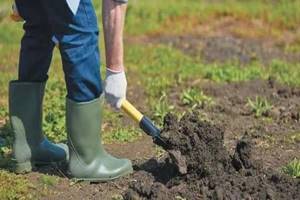
The first preparation of the soil without manure and the addition of other organic fertilizers is carried out in the fall. First, the area is cultivated to get rid of weeds and loosen the soil a little. Then the entire area must be watered with a solution prepared from Bordeaux mixture or copper sulfate. In the fall, it is not necessary to water the soil with alkaline liquid, since it is better to do this before planting cucumbers.
In the spring, the garden is fertilized with humus and other organic matter is added to the soil. However, you should not use too much organic fertilizer. We treat a square meter of plot with 3-5 kg of rotted manure and 50 grams of mineral fertilizers. Some gardeners advise adding 100 grams of lime to the soil to slightly reduce its acidity level. When the soil is prepared, it should be dug up and leveled with a rake.
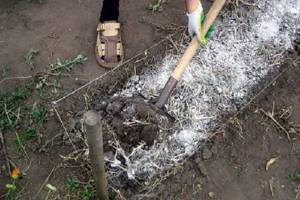
Advantages of warm beds
Cucumbers can be grown in any way: in a garden bed in open ground or in a greenhouse. The main thing is to provide optimal conditions: they require a temperature of +15° even at night. They begin to grow actively from the end of June.
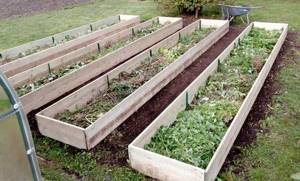
Therefore, to get an earlier harvest, many summer residents try to plant cucumbers in a warm bed. Its peculiarity is that, thanks to biochemical processes, heat is released, creating favorable conditions for the growth of vegetables. Compared to conventional beds, warm beds have many advantages:
- you can plant seeds two weeks earlier than usual;
- they grow faster and cucumbers appear earlier;
- the soil is more nutritious, so the harvest is plentiful, and the fruits are larger and healthier;
- fruiting time increases;
- You don’t have to use organic matter for feeding;
- the plant is stronger, there are no soil pests;
- almost no weeds;
- the land remains fertile for several years.
This bed is economical; to make it, you can use waste, of which there is always a lot in the garden: grass, weeds, tops, leaves, cut branches. But its correct design is not an easy task; a lot needs to be foreseen.
How to make a bed for cucumbers
Preparing a bed is a complex job that is not easy for beginners to handle. There are various useful ideas to help prepare beds for the lazy. To understand how to make beds correctly, you need to familiarize yourself with the main stages of its manufacture.
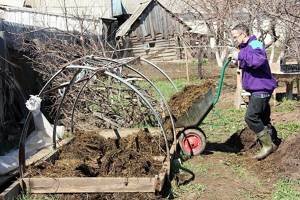
Creating a trench
First you need to dig a trench, which is needed for growing vegetables. Its size should not be too large. The width of the trench is no more than one meter, and the height is 40-50 cm.
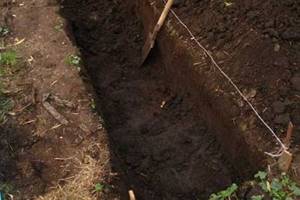
Laying grass
To make the trench more durable and the cucumbers do not fall under the ground, a small layer of grass should be laid on the bottom. To do this, any tall grass is mowed, placed on the bottom and carefully trampled underfoot. If this is not done, then after the rains the soil in the garden bed will sag greatly and because of this, the young cucumber bushes will begin to rot.
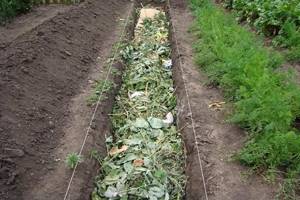
Preparing the fertilizer mixture
To get a good harvest of cucumbers, prepare a special mixture for feeding. It is made from moldy bread mixed with potato skins. Before treating the bed with the prepared solution, the trench should be watered with warm water. Then the soil layer with grass in the trench is covered with the mixture. Over time, a fermentation process occurs, during which bacteria begin to appear. Cucumbers need them for normal growth.
See also
Why can cucumbers grow with a crochet hook in a greenhouse and open ground, what do they lack? Read

Landing
We fill the entire layer with fertilizers with soil, after which we plant the cucumbers in the garden bed. To do this, the cucumber bed is first watered with water and small holes are made in it. Their size should be 10 cm wide and 5-7 cm deep. Before planting cucumbers, the seeds must be disinfected.
Some people are wondering whether it is possible to plant cucumbers too close. This should not be done, as the bushes can shade each other and grow slower because of this. It is recommended to install special supports near each bush, from which the plants are suspended for better growth.

Types of warm beds
Warm cucumber beds can be of three types:
- with deep laying;
- on the soil surface;
- above the surface of the earth.
In order to make a bed with a bookmark, you need to dig a trench two shovels deep, lay it across with branches and cover it with sawdust.
Place a layer of straw, garden waste, autumn leaves, unripened compost or newspapers (cardboard) 5 to 7 cm thick on top of the branches and sawdust. All this is filled with warm water, then a mixture of garden soil and compost is poured. This cucumber bed can last up to 5 years or more. In the second year, there is no need to supplement the top layer with compost - it is produced by the bed itself.
Advantages of a cucumber bed with a bookmark:
- convenient to water;
- water does not stagnate;
- no digging required in spring (only loosening);
- Cucumbers can be planted much earlier than in a simple garden bed.
How to make warm beds for cucumbers on the surface of the soil?
Even easier than with a bookmark. You need to dig up the bed while removing weeds, lay a mixture of manure, compost and garden soil, fill it with warm water and cover it with film (preferably black). The film can be secured with stones or bricks. This design is suitable for planting cucumber seedlings.
What is the best way to make warm beds for cucumbers above the ground (vegetable containers)? These designs are more complex, as they require the construction of a box made of boards, slate and bricks. Sand is poured onto the bottom of such a container, then wood waste, which is covered with a layer of organic waste (leaves, skins of fruits and vegetables, eggshells). The next layer is straw. Each layer must be thoroughly compacted and watered with liquid manure. All this is covered with a mixture of garden soil and compost.
Pros and cons of warm cucumber beds above the soil surface:
- you can make several beds of the same size;
- this design is convenient for watering and weeding;
- takes up little space;
- there is no mess or dirt;
- productivity almost doubles.
Cucumbers should be planted along the edges of the box in two rows, which allows increasing the illumination of the plants.
If you plant cucumbers in warm beds in early spring, you can cover them with a greenhouse made of plastic arcs and polyethylene. This increases the effect of a warm cucumber bed and allows you to get an early harvest of this crop that does not depend on the weather.
What is the best way to make warm beds for cucumbers in a very small area?
If there is very little land, it is possible to make vertical beds. The easiest option is an old tire. First you need to dig a hole of the appropriate size, lay down branches, straw, organic waste, install a tire and fill it with a mixture of soil and humus. The lattice allows you to save space by preventing the cucumbers from growing wider.
A tire can easily be replaced by a circle made of any other material - the growing technology does not change.
Another option is a metal or plastic barrel with a volume of 150-200 liters. In autumn or early spring, half of it is filled with tree branches, sawdust, and mown grass. Before planting, add a mixture of garden soil with rotted manure or compost, add hot water and cover with black film (to keep the soil warm). In order for the cucumbers to grow upward, half-arcs about one meter high are placed in the ground along the edges of the barrel. In the middle of the container you need to stick a wooden peg to which the stems will be tied. Cucumber seedlings are planted in holes cut in the film. If there is no barrel, it can be made from several tires, placing them one on top of the other.
Pros and cons of warm cucumber beds in a barrel:
- space is saved;
- When decomposing, organic matter warms the root system, which allows you to get a harvest earlier;
- due to their location above the soil, plants are not afraid of frost;
- there is no need to dig the bed;
- no feeding required;
- convenient to care for and pick cucumbers;
- clean cucumbers.
The disadvantages include the need to purchase barrels (look for tires) and have a large amount of organic waste.
The same principle of a vertical warm cucumber bed is used when growing this crop in bags or bags made of polyethylene (volume approximately 100-120 liters). In addition to the bag (package), you will need a wooden stick (about 2 m long), three tubes with a cross-section of 30 mm, a cord (30 m), 20 pegs.
You need to hammer several nails into one end of the stick - the cord will be attached to them. Holes must be drilled along the entire length of the tubes. Then you can fill the bag (package) in the same way as a barrel. A wooden stick is driven in the middle, and tubes are placed around it to create an irrigation system. Seeds (seedlings) are planted only at the top (the same as in a barrel). To plant more vegetables, also make holes on the sides. The advantages of this method are the same as when using a barrel.
More complex vertical beds can be seen in the image below:
Their installation requires certain skills, but they also save space. You can get the harvest early if you line each box with thick plastic film and make a miniature warm bed.
Hanging beds can also be classified as vertical, since they also consist of boxes, but require practically no space - they are mounted on the wall. Unlike a large, warm bed for cucumbers in boxes, the soil must be changed every year.
Rules of care
Any smart housewife who grows vegetables knows that they need proper care.
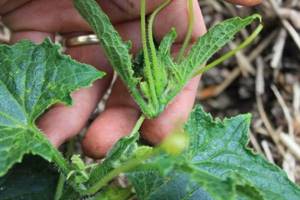
Watering
It's no secret that bushes need to be watered periodically. Watering is a must for growing cucumbers, as it directly affects the quality of the resulting harvest. You need to moisten the soil 2-3 times a week, if it is not too hot outside. On hot summer days, plants need to be watered daily so that the soil does not have time to dry out.
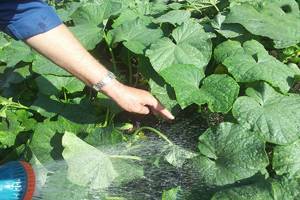
Top dressing
Treating the soil with fertilizers stimulates the development of plants, since the treated soil contains a large amount of nutritional components. Not every vegetable grower knows which component should be added to the soil when fertilizing cucumbers. At the moment the leaves appear and the vines form, nitrogen fertilizers with potassium should be added to the soil.
Organic fertilizers should also be added to the soil with crops. Many people recommend adding bird droppings and horse manure to the soil. Sometimes slurry made from cow manure is used instead.
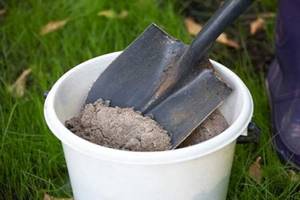
Pinching
Cucumbers are pinched repeatedly during cultivation. For the first time, this procedure is carried out after the appearance of the first true leaves. In this case, the pinching is done above the second leaf. Next time the procedure is repeated, but already on sheets 7-9. Next, you will have to pinch the plant every three leaves.
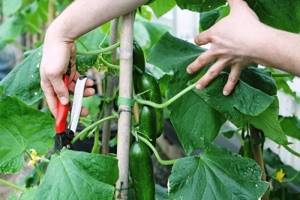
Rules for planting cucumbers
To properly plant cucumbers, you should adhere to the following rules:
- The site should be located away from flowing reservoirs and streams.
- You should prepare the planting site and make sure that drafts do not enter the area where the crop grows.
- You need to loosen the soil and water regularly. This preparation will prevent the formation of a hard crust and prevent drying out.
- It is necessary to prepare fertilizing in advance. They should be carried out more often than indoors.
- When harvesting cucumbers, it is advisable not to turn over the vines of the plant.
- Weeding is carried out more often in open ground than in a greenhouse. But it is best to cover the beds with black film.
Any gardener knows that cucumbers respond well to the organic composition of the soil where they grow. That is why in the fall, manure, chicken droppings, fresh grass, polycarbonate and branches are periodically added to the soil.
Important! This method makes the breast fertile and generates heat as it decomposes.
To achieve high yields, it is necessary to prepare planting material in advance. To prevent the roots from being damaged during sunbathing, you need to water the plant generously after planting.
Cucumbers in the garden

